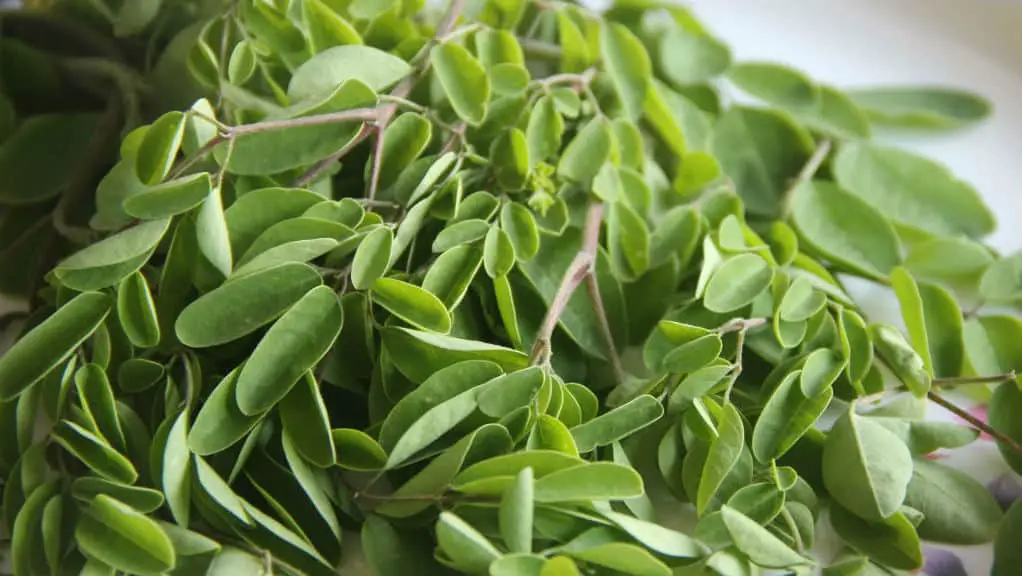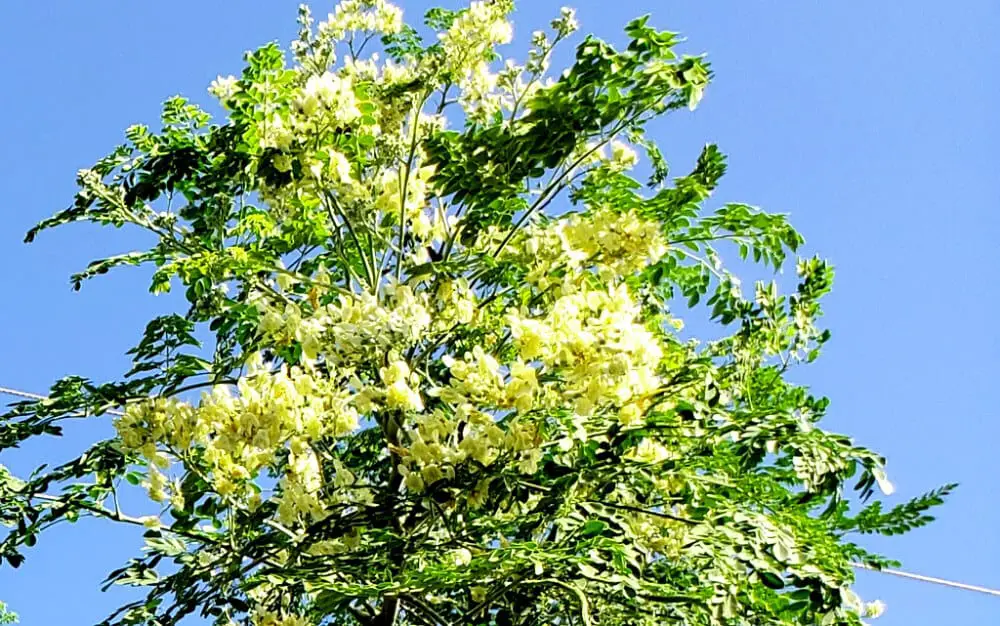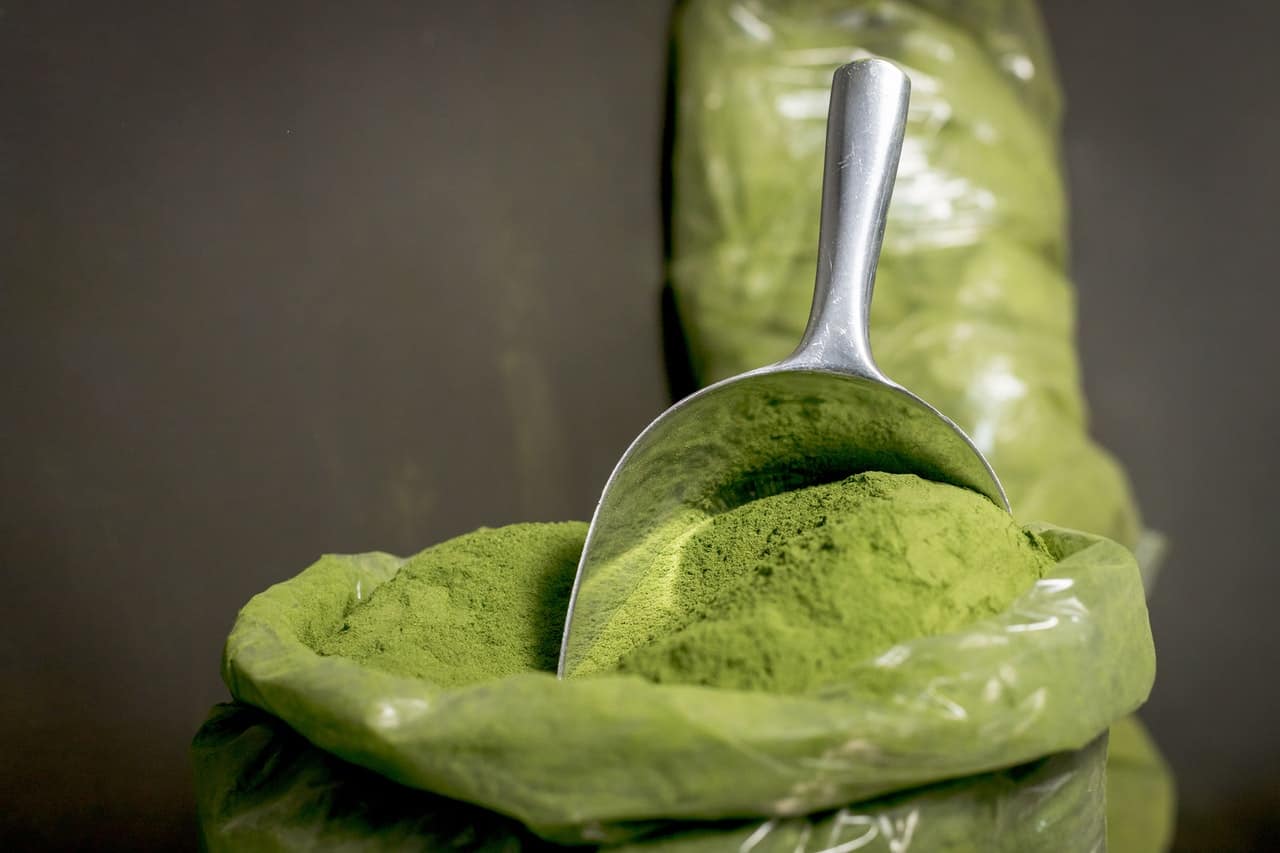
Technically, “Moringa” refers to a genus of 13 different tree species—think of them as a big family of cousins. But when people talk about moringa, they usually mean one species: Moringa oleifera.
Also known as the “drumstick tree,” the “horseradish tree,” or more dramatically as the “miracle tree” or “tree of life,” Moringa oleifera grows mostly in tropical and subtropical regions.
Originally native to the Indian subcontinent (including Pakistan and Bangladesh), moringa has spread widely across the Eastern Hemisphere—places like Africa, Sri Lanka, Malaysia, and the Philippines—and even made its way to parts of the Western Hemisphere. Today, you can find moringa growing from backyards in Mississippi to gardens in Texas.
What really sets moringa apart is that almost every part of the tree is edible—and packed with nutrition.
We’ll dive into those nutrition facts next!
How to Identify the Tree?
Moringa trees are easy to recognize — you won’t mistake one for a pine or oak.
They’re slender, with trunks that are widest at the base and narrow as they grow taller. The bark is smooth and usually a light ash-gray color.
Most moringas reach 5 to 8 meters (16 to 24 feet), though some rare ones grow up to 12 meters (39 feet).

From the moment a seed sprouts, thin, oval-shaped leaves begin to grow. At first, only a few leaves appear at the tips of delicate branches, but soon they multiply and weigh the branches down.
These leaves are tripinnate, meaning each branch splits into smaller branches arranged in a triangular pattern.
Each tiny leaf ranges from about half a centimeter to half an inch long.
In summer, moringa trees burst into clusters of small white flowers with yellow stamens. They have a unique scent — a mix of the leaves’ earthy aroma and a faint floral perfume.
These flowers attract honeybees in droves — sometimes even more than garden flowers nearby.

Shortly after flowering, thin, green pods begin to grow. They’re easy to miss at first, but by the time they’re about six inches long, they’re impossible to overlook.
The pods start out as thin as a Q-tip but thicken as they grow. When ready to harvest, they’re roughly as thick as a screwdriver handle and as long as an arm.
The pods are bumpy because they contain seeds—usually between 10 and 25, though sometimes as many as 50.
Moringa seeds are triangular with thin, wing-like skins. Immature seeds are soft and pale white-green, but they harden and brown as they mature, looking a lot like nuts.
Interested in growing your own Moringa? Check out these helpful guides:
- How tall does the Dwarf Moringa Tree Grow?
- Why are My Moringa Leaves Turning Yellow?
- How and When you Should Harvest your Moringa Seeds?.
- Can Moringa Grow Indoors?
- How Fast Does Moringa Grow?
- How you should Prune your Moringa Tree?
Is Moringa safe to eat?
Short answer: Yes.
Detailed answer: Moringa is generally safe to eat, but some parts of the tree are better consumed than others.
Humans have eaten almost every part of the Moringa tree for thousands of years — as food and traditional medicine. It’s leaves are popular fresh, dried, or powdered. The long seed pods (known as drumsticks) are commonly added to soups and stews. The immature seeds can be eaten like nuts, and the oil extracted from seeds is also used in cooking. Even the roots, flowers, and bark have traditional uses — the roots for their horseradish-like flavor, and the bark and flowers for medicinal purposes.
However, caution is needed: Eating the roots, bark, or flowers in large amounts can be harmful. The root bark contains alkaloids that act as cardiac stimulants and possess anti-ulcer properties, but these compounds can be dangerous if taken in excessive doses. Even the roots themselves may cause side effects if consumed frequently or in large amounts.
Because scientific research on the safe dosage of roots, bark, and flowers is still limited, it’s best to avoid eating these parts for now.
What about the edible parts? The leaves, pods, and seeds are safe and widely consumed.

Extensive scientific studies confirm the safety of it’s leaves and pods. For example, human trials involving powdered Moringa leaves tested doses ranging from a single 50-gram intake to daily doses of 4–8 grams over several weeks. Participants showed no adverse effects; in fact, many experienced health benefits like reduced cholesterol and blood sugar levels.
Animal and laboratory studies also support Moringa’s safety. A 2015 review by Sidney J. Stohs and Michael J. Hartman concluded that Moringa leaves “appear to be exceedingly safe at the doses and in the amounts commonly utilized.”
Thousands of years of traditional use worldwide back up this scientific evidence.
In summary: Moringa leaves, pods, and seeds are safe to eat in typical amounts. Avoid roots, bark, and flowers until more research clarifies safe doses.
Those that are pregnant should read this guide first:
Nutritional Benefits of Moringa
Most of us don’t get nearly enough vitamins and nutrients in our diets. According to a 2015 report from the Office of Disease Prevention and Health Promotion, 87% of Americans consume fewer vegetables than recommended, and 75% fall short on fruit intake.
While many people have easy access to fresh produce, millions around the world—and even within developed countries—struggle to meet their daily nutritional needs. That’s where Moringa can make a difference.
Why Moringa?
Several studies comparing the nutrient content of Moringa leaves to common fruits and vegetables reveal impressive results:
- Vitamin A: 10 times more than carrots
- Calcium: 17 times more than milk
- Vitamin C: 7 times more than oranges
- Protein: 9 times more than yogurt
- Potassium: 15 times more than bananas
- Iron: 25 times more than spinach and 14 times more than beef
- Plus, it contains all 9 essential amino acids
Obvious fact: most of us don’t get nearly the amount of vitamins and nutrients that we should.
According to a 2015 report by the Office of Disease Prevention and Health Promotion, 87% of Americans have vegetable intake below the recommended amount. 75% have fruit intakes below it as well.
Most middle- and upper-class Americans have the ability to eat fruits and vegetables whenever they want. However, there are places all over the world (and indeed in our own country) where the average person isn’t able to access proper nutrition.
While nutrient levels can vary depending on soil quality and climate—trees grown in Nigeria show slightly lower nutrient content than those grown in India—the overall nutritional value of Moringa remains remarkable.
That table isn’t complete. It doesn’t count the amino acids. It doesn’t include the high levels of vitamin K (necessary for blood coagulation), manganese (good for bone strength and growth), or zinc (important for DNA/RNA synthesis, which is, to be frank, a big deal). But it makes it very easy to see exactly how many of these nutrients 100 grams of Moringa can contain.
Want to dive deeper? Check out these articles:
Benefits of Moringa
Moringa Oleifera is often called the “miracle tree” because of its wide range of health benefits. Packed with essential nutrients and powerful plant compounds, Moringa has been used traditionally for centuries and is increasingly supported by modern research.
1. Nutrient-Rich Superfood
Moringa leaves provide an impressive amount of vitamins and minerals—vitamin A, vitamin C, calcium, potassium, iron, and all nine essential amino acids. This dense nutritional profile supports overall health and helps fill common dietary gaps.
2. Powerful Antioxidant Effects
The leaves contain antioxidants like quercetin, chlorogenic acid, and beta-carotene that help fight oxidative stress. By neutralizing free radicals, these antioxidants reduce cellular damage and may lower the risk of chronic diseases such as heart disease and type 2 diabetes.
3. Supports Healthy Blood Sugar Levels
Multiple studies have found that Moringa leaf powder can help reduce blood sugar levels in people with diabetes or pre-diabetes. This effect is likely due to the presence of compounds that improve insulin sensitivity and glucose metabolism.
4. Anti-Inflammatory Properties
Chronic inflammation plays a role in many health issues, from arthritis to heart disease. Moringa’s plant compounds, including isothiocyanates, have strong anti-inflammatory effects that can help reduce inflammation naturally.
5. Promotes Heart and Brain Health
Moringa has been shown to lower cholesterol levels, reducing risk factors for cardiovascular disease. Its antioxidant and neuroprotective compounds also support brain function, improving memory and cognitive health.
6. Supports Digestive and Immune Health
The fiber content in Moringa aids digestion and promotes gut health. Additionally, its vitamin C and other immune-boosting nutrients help strengthen the body’s natural defenses against infections.
7. May Improve Skin and Hair Health
Thanks to its vitamin A, vitamin E, and other nutrients, Moringa can support healthy skin and hair, promoting repair and protection against environmental damage.
For a deeper dive into specific health advantages, check out these detailed articles:
Traditional & Modern Uses of Moringa
For thousands of years, Moringa has been prized in traditional medicine systems across Asia, Africa, and beyond. From Ayurveda to folk remedies, it has been used to help manage ailments such as diabetes, ulcers, joint pain, inflammation, and even fatigue.
In modern times, the spotlight has shifted toward scientific research. Over the last few decades, Western laboratories have begun to study Moringa in earnest — first focusing on animal studies, and more recently expanding into human trials.
While modern science still has a way to go before Moringa supplements appear on prescription pads, the evidence we do have is promising. Studies suggest that it may help:
- Support healthy blood sugar and cholesterol levels
- Reduce inflammation
- Improve digestion
- Support joint and bone health
- Boost energy and vitality
- Promote better immune function
These benefits aren’t surprising when you consider the nutrient density of Moringa’s leaves, seeds, and pods. However, in the scientific world, 100% certainty requires large-scale, long-term human trials — so while the potential is exciting, we still need more research.
Whether enjoyed fresh, as a tea, or in powdered form, Moringa continues to bridge the gap between ancient wisdom and modern wellness.
Related reading for deeper insights:
- How long does it take for Moringa to Start Working?
- How Much Moringa Should I Take Each Day?
- Where Can You Buy Moringa?
Final Thoughts: Why Moringa Deserves a Place in Your Life
Moringa isn’t just another health trend — it’s a time-tested, nutrient-dense powerhouse with the potential to support everything from energy levels and digestion to healthy blood sugar and immune function. Backed by centuries of traditional use and growing scientific interest, this “miracle tree” offers a simple way to add more nutrition and wellness to your daily routine.
This guide is just the beginning. Whether you want to grow your own tree, try Moringa powder in smoothies, or explore its specific health benefits, you’ll find everything you need right here on our site. Dive deeper, explore our detailed guides, and see how Moringa can make a difference in your life.